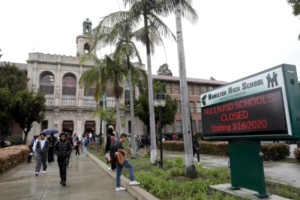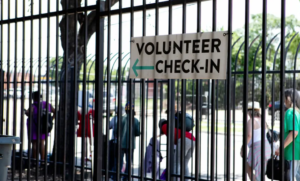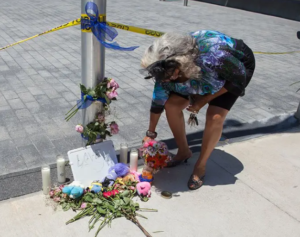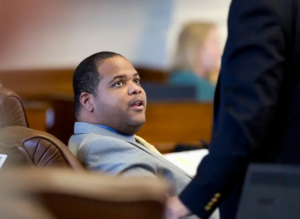Hi, neighbour: The dynamics that shape Melbourne’s inter-ethnic relationships
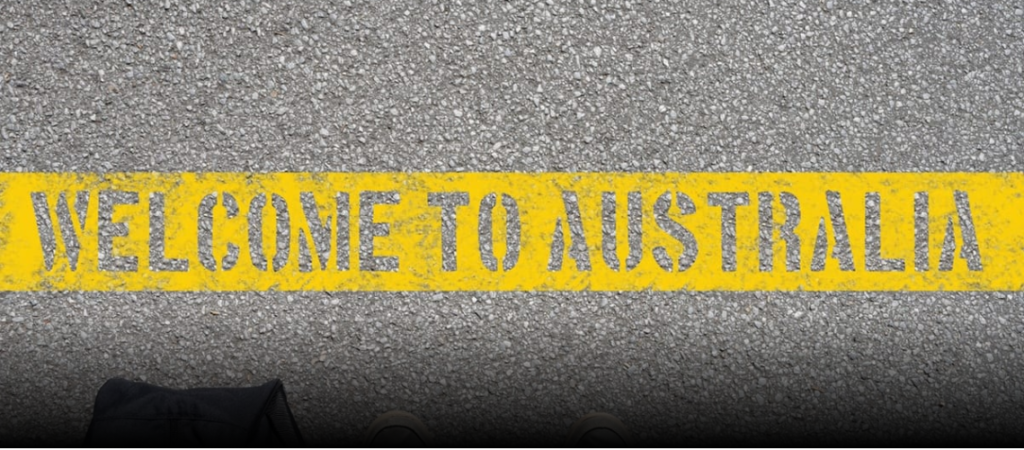
Immigration is one of the many things on which Australia and the United States share common ground.
People from all over the world want to come to both countries, perhaps because they want to escape where they come from, and/or wish to have a better life and more opportunities in their new home.
Yet, some of these migrants aren’t entirely welcomed with open arms by their new host countries. In times of social change, migrants can experience further exclusion. Australia, and the rest of the world, is experiencing one of the most significant social, economic and health crises in history with the coronavirus. And there are already signs that racial and ethnic discrimination is on the rise.
Why is this the case?
Unfortunately, all too often it’s the view that these people are not “like us’”, do not “look like us”, “share our values”, “will take our jobs”, “will bring crime and violence with them”, or “will bring social and health problems with them”.
For the most part, the scientific evidence provides little support for these perceptions that are all too often based on fear, not objective data. Reported increases of racially motivated abuse, particularly against Asian Australians, paints a clear picture of how fear and uncertainty can lead to the unfair targeting of particular ethnic communities. Further, it evidences how easily social groups are labelled as the “cause” of a particular problem.
Alex Piquero is a professor of criminology at Monash University, a position he holds concurrent with his ongoing appointment as Ashbel Smith Professor and Director of Social Impact Research in the Office of Research at The University of Texas at Dallas.
A recent study he undertook in the US showed that immigrants – and, in a second study, even undocumented immigrants – commit less crime than native-born Americans, and in his latest study, immigrant-heavy neighbourhoods actually had an insulating effect against crime.
The Australian experience
Within the Australian context, there’s been a sizable increase in immigration that is certain to change the ethnic, sociostructural and physical landscapes of urban neighbourhoods – where most immigrants settle. Similar to studies in the US, emerging research doesn’t find that neighbourhoods with a greater concentration of immigrants have more crime, or that increases in immigration over time aligns with increased crime.
But can the influx of immigrants to Australia alter the interpersonal relationships and neighbourhood networks in these areas, and if so, does this help or harm these neighbourhoods?
Given the importance of this issue, an unprecedented study has been examining Melbourne neighbourhoods, and the different racial and cultural attitudes held towards minority groups by people across the city.
The study, led by Monash University Associate Professor of Criminology, and Director of the Monash Migration and Inclusion Centre, Rebecca Wickes, sought to better understand the contextual dynamics that shape the city’s inter-ethnic relationships.
The data, from 2500 residents across 148 neighbourhoods, examined both the individual and neighbourhood-level drivers of social exclusivism.
Historically, Melbourne has been more tolerant of immigration than other Australian cities. But it’s also experiencing higher levels of immigration than anywhere else.
In the 2017-2018 financial year, net overseas migration to Australia was 245,400, with the national population increasing by 1.6 per cent overall. In the same year, Victoria’s population rose by 2.3 per cent, the highest of all the states and territories (the ACT was second with 1.7 per cent). Skilled migrants, overseas students, business migrants and refugees are all choosing Victoria.
To find out how residents in different neighbourhoods were coping, in 2017 researchers mailed out a 100-question survey to a random selection of people in 150 local government areas within “the Melbourne statistical area”.
Focus on ‘social exclusivism’
The study’s particular interest was “social exclusivism”, defined as the inability of all citizens to have full participation in civic, social and economic life”. Specifically, the study examined “whether or not particular neighbourhoods … encourage greater or lesser exclusion in their area”.
The research project was conducted for the Research Institute on Social Cohesion, within the Department of Premier and Cabinet.
The survey asked respondents to rank community problems in their suburb, how they perceived immigration, whether they had contact with different immigrant groups, or felt anger or warmth towards particular groups, whether they had witnessed hate-based incidents, and their perceptions about crime and violence in their neighbourhood.
Dr Wickes says the survey also asked “if they would remove their children from schools if there were large numbers of migrant children who started to attend, or would they support politicians who were very punitive about migration policy”.
Participants living in more ethnically diverse areas reported more favourable attitudes towards migrants.
The study matched these survey responses with neighbourhood-level data on crime and poverty using census and crime statistics.
“Where we live exposes us to certain social realities,” Dr Wickes explains, “and how we then interpret that and act upon that varies between different people.”
One of the questions the study explored was whether “certain areas encourage actions that would be more punitive against particular minority groups”.
Understanding the Context of Racial and Cultural Exclusivism: A Study of Melbourne Neighbourhoods acknowledges that despite Australia’s successful history as an immigrant nation, there are those who hold quite harmful views about immigration.
This is evidenced in a national survey in Australia led by Monash University’s Professor Andrew Markus on behalf of the Scanlon Foundation. The latest Mapping Social Cohesion survey revealed that about 30 per cent of Australians do not believe that immigration from diverse nations makes us stronger, and also consider the current immigrant intake as “too high” (the 2018 Scanlon report).
The same report found that “negative attitudes against Muslims are also increasing”.
How did Melbourne measure up?
So, what did the Melbourne neighbourhood survey find?
First, that the majority of people had neutral or positive sentiments towards immigrant groups, but one in four respondents reported low warmth towards Muslim, African and Middle Eastern people, and one in six respondents reported anger towards these same groups.
Second, negative sentiments and attitudes towards migrant groups was strongly associated with how one votes. Coalition voters expressed more negative attitudes toward immigrants compared to those who would vote for Labor and the Greens.
Third, there were significant protective factors that worked against the development of harmful sentiments. An individual’s own sense of community belonging was a strong protective factor against holding socially exclusive attitudes, as was neighbourhood diversity. Participants living in more ethnically diverse areas reported more favourable attitudes towards migrants.
What does this all mean for future immigrants, Australian communities, and Victorian political leaders?
Dr Wickes and her colleagues on this study recommend local, state and federal government take steps to:
- reduce cultural stereotyping
- promote the positive contributions made by immigrant groups
- continue to educate citizens about the benefits of a diverse community by sharing objective data about what immigrants bring with them, and what they achieve when they arrive in Australia
- encourage events such as the annual Victorian Mosque Open Day, the Welcome Dinner Project, as well as activities at the Immigration Museum in central Melbourne
- continue to support and expand education projects in Victorian schools, such as Respectful Relationships, that help young people learn to develop healthy relationships based on gender equality, resilience, and respect for different identities.
Dr Wickes and Dr Piquero, who are both from the US, say that “in the end, we must all remember that we, both in Australia and in the United States, are a nation of immigrants, and that new immigrants bring economic, social, and cultural benefits”.
They also say that diversity is a feature of every city in the world, and diversity will only increase in the years to come. Drs Wickes and Piquero suggest that what is needed now is “careful settlement planning”, and the development of a welcoming culture in communities across Australia and around the world.
Given the current challenges that Australia and other countries will face in the aftermath of COVID-19, creating and sustaining a welcoming culture is ever more pressing. After all, this is a problem that affects every person in every country around the world. Only a united front where people from all backgrounds work hand-in-hand will help to solve this humanitarian crisis, they say, adding that, just perhaps, this experience can help people look past their differences and instead focus on their shared and linked lives.
The Article was originally published on Hi, neighbour: The dynamics that shape Melbourne’s inter-ethnic relationships.


